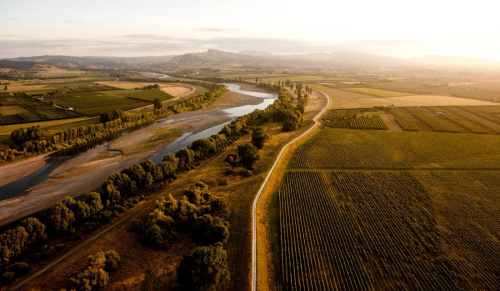


Projections produced by the New Zealand Infrastructure Commission, Te Waihanga, show the recovery from Cyclone Gabrielle has the potential to create a peak demand of more than 8,700 additional on-the-ground construction workers across Hawke’s Bay, says the Hawke’s Bay Regional Recovery Agency.
The Commission’s projections not only highlight the critical importance of managing future demand for workers to support Hawke’s Bay’s recovery, it’s also an excellent example of local agencies working closely with central Government to create positive outcomes for the region says Hawke’s Bay Regional Recovery Agency Chief Executive, Ross McLeod.
“We have worked closely with Te Waihanga and the Construction Sector Accord to ensure that Hawke’s Bay is well-represented in these construction workforce projections, and this information is critical to informing a collective understanding of the huge task ahead as we progress toward meaningful recovery for the region.
“For Hawke’s Bay, these projections have been developed using data supplied by a number of key players in the region’s recovery, including Hawke’s Bay’s five Councils who identified and submitted their respective work programmes and recovery activity.
“It is important to remember that these are only early numbers, and there is still much work to be done on programme and phasing recovery work programmes – however, the end result will be a hugely useful tool with a strong influence over how recovery work will be spread over time. It’s also a fantastic example of how central Government can partner with local Government and other agencies to better understand local recovery need.”
When it comes to workforce planning, having a clear picture of the future is critical to ensuring the region can prioritise projects to best utilise available workforce, Ross says.
“This is not only about helping decision makers to prioritise and sequence work in a way that maximises a workforce that will very much be in high demand, but also about ensuring work programmes and activity is planned for and scheduled in a way that minimises any potential disruptions to communities across the region.”
Ross says it is important to recognise and acknowledge the role of central Government in this work, their ongoing support for Hawke’s Bay’s recovery, and their hard mahi in pulling this valuable tool together.
“The Regional Recovery Agency will continue to work with key Government agencies to ensure Te Waihanga’s projections and the data sitting in behind it is fully leveraged, enabling the Hawke’s Bay region to be future-focussed and targeted in its approach to workforce planning.
“We will also continue to work closely with Government to ensure we have the right workforce development, housing, transport and immigration settings in place to ensure the region is well set-up to train and accommodate the workers we will be heavily reliant on as we work to build Hawke’s Bay back safer, stronger and smarter.”
Disclaimers and Copyright
While every endeavour has been taken by the to ensure that the information on this website is
accurate and up to date, shall not be liable for any loss suffered through the use, directly or indirectly, of information on this website. Information contained has been assembled in good faith.
Some of the information available in this site is from the New Zealand Public domain and supplied by relevant
government agencies. cannot accept any liability for its accuracy or content.
Portions of the information and material on this site, including data, pages, documents, online
graphics and images are protected by copyright, unless specifically notified to the contrary. Externally sourced
information or material is copyright to the respective provider.
© - www.hawkesbayrecovery.nz / +64 6 000 0000 / info@hawkesbayrecovery.nz